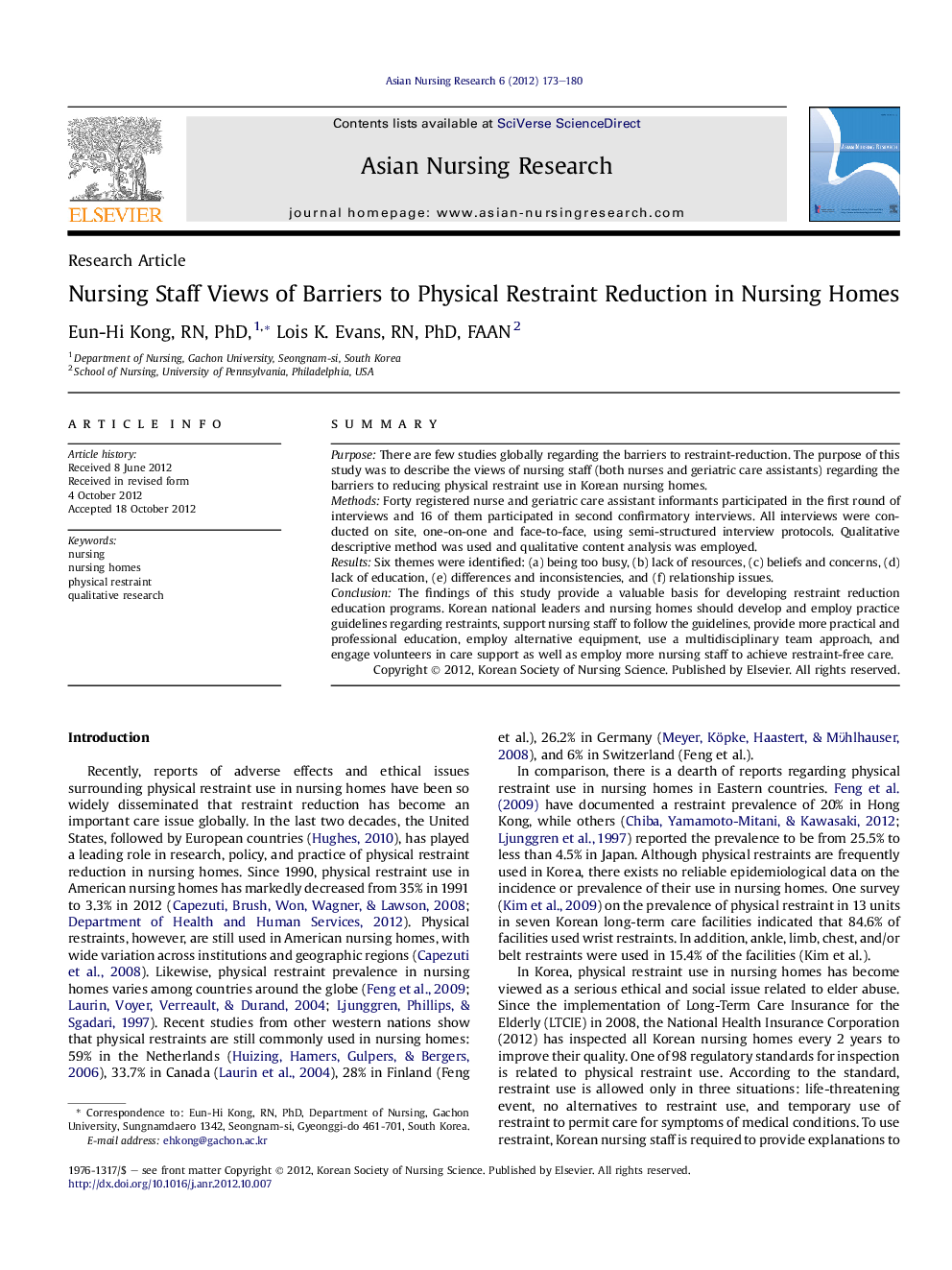| Article ID | Journal | Published Year | Pages | File Type |
|---|---|---|---|---|
| 2645076 | Asian Nursing Research | 2012 | 8 Pages |
SummaryPurposeThere are few studies globally regarding the barriers to restraint-reduction. The purpose of this study was to describe the views of nursing staff (both nurses and geriatric care assistants) regarding the barriers to reducing physical restraint use in Korean nursing homes.MethodsForty registered nurse and geriatric care assistant informants participated in the first round of interviews and 16 of them participated in second confirmatory interviews. All interviews were conducted on site, one-on-one and face-to-face, using semi-structured interview protocols. Qualitative descriptive method was used and qualitative content analysis was employed.ResultsSix themes were identified: (a) being too busy, (b) lack of resources, (c) beliefs and concerns, (d) lack of education, (e) differences and inconsistencies, and (f) relationship issues.ConclusionThe findings of this study provide a valuable basis for developing restraint reduction education programs. Korean national leaders and nursing homes should develop and employ practice guidelines regarding restraints, support nursing staff to follow the guidelines, provide more practical and professional education, employ alternative equipment, use a multidisciplinary team approach, and engage volunteers in care support as well as employ more nursing staff to achieve restraint-free care.
